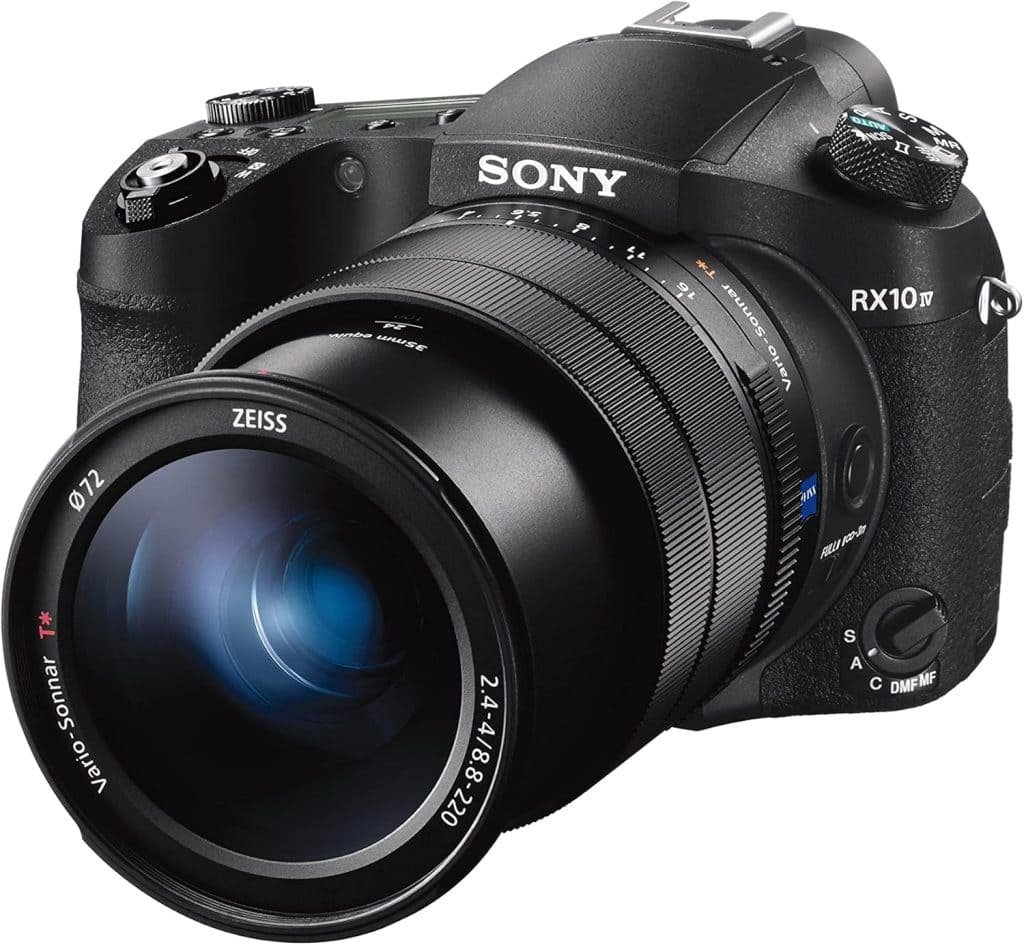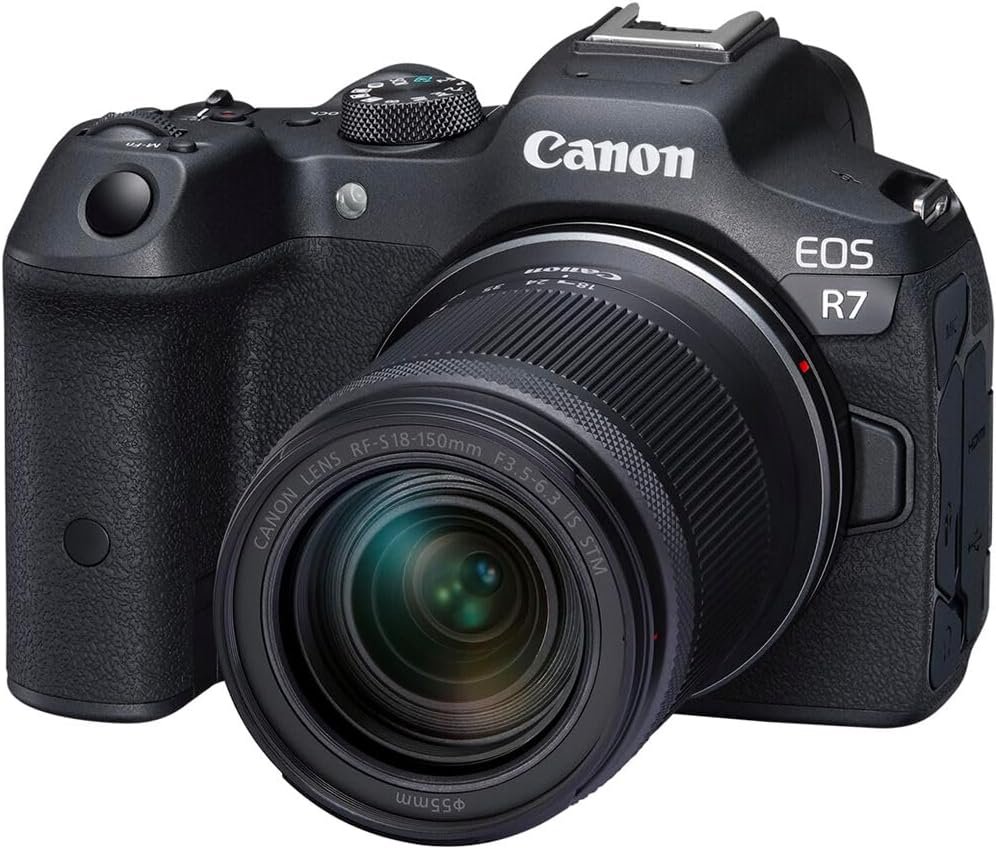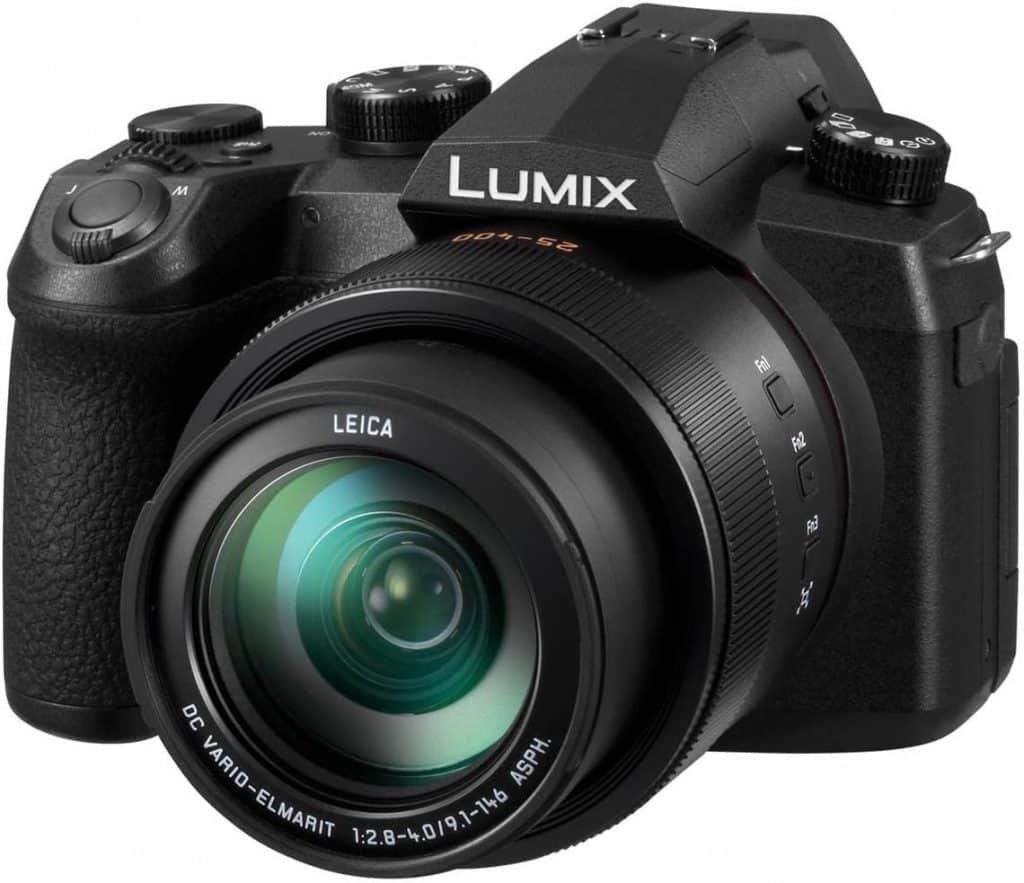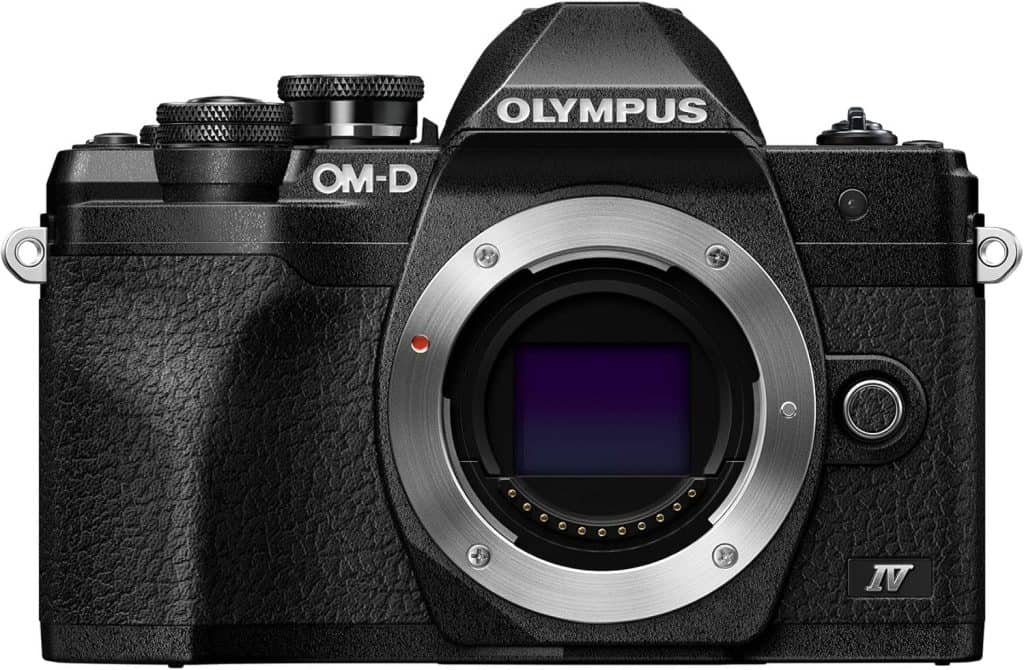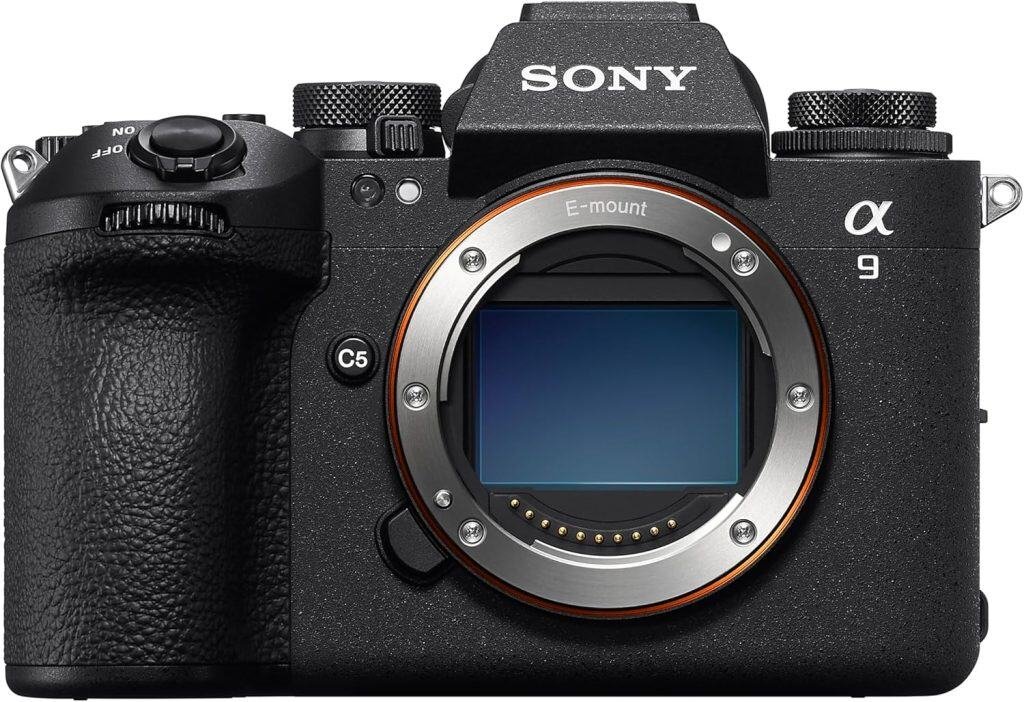Observing God’s creation using the best camera for birding particularly birds, is a rewarding and fulfilling experience. The beauty and variety of birds inspire countless enthusiasts to delve into bird photography, which requires the right tools to capture the elegance of these creatures.
Choosing the best camera for birding is a crucial step in immortalizing these breathtaking moments.
Related:
Why It Is a Good Thing to Watch Birds
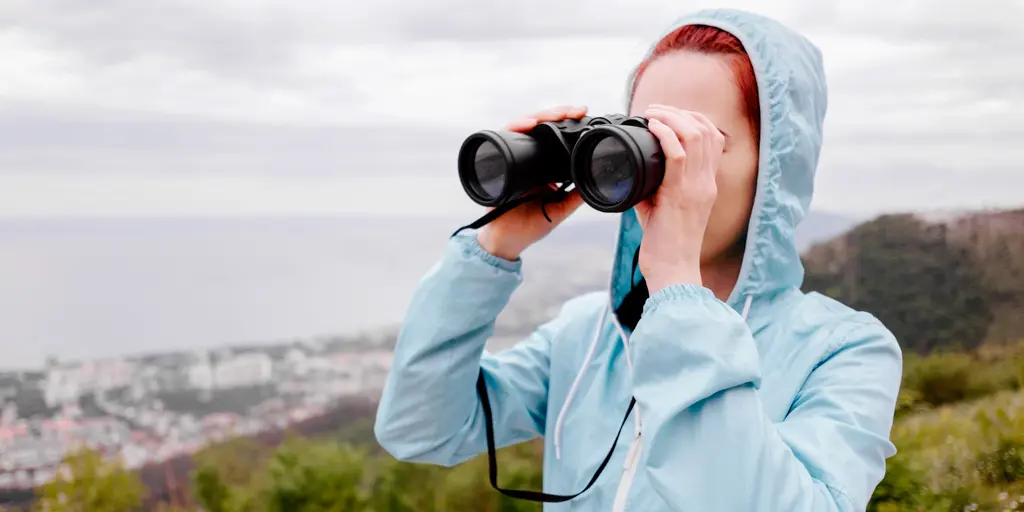
Bird watching is more than a hobby; it is a way to reconnect with nature and appreciate its intricate design.
Watching birds enhances mental well-being, sharpens observation skills, and provides a calming escape from the hustle of daily life.
Additionally, it fosters environmental awareness and conservation efforts.
Bird watchers not only observe but also contribute to understanding and preserving avian species.
The Best Places in the World to Watch Birds
Exploring diverse habitats across the globe allows bird enthusiasts to encounter a stunning array of species. Here are some of the top destinations:
The Pantanal, Brazil
The Pantanal is the world’s largest tropical wetland, home to a rich variety of bird species. Visitors can spot the iconic Hyacinth Macaw, Jabiru Stork, and Toco Toucan.
This area is a paradise for photographers and bird watchers alike, offering opportunities for close encounters.
Kruger National Park, South Africa
Renowned for its wildlife, Kruger National Park is also a haven for bird lovers. Species such as the Lilac-breasted Roller, Saddle-billed Stork, and Martial Eagle are abundant.
The diverse ecosystems make it a perfect location for observing both migratory and resident birds.
Yellowstone National Park, USA
Yellowstone is famous for its geothermal features and wildlife, but it is also a hotspot for bird-watching.
The Bald Eagle, Sandhill Crane, and Peregrine Falcon are some of the magnificent birds that can be seen here. Its varied landscapes make it ideal for spotting birds year-round.
Bharatpur Bird Sanctuary, India
Also known as Keoladeo National Park, this UNESCO World Heritage Site is a wintering ground for aquatic birds.
It hosts species such as the Siberian Crane, Painted Stork, and Indian Courser. The sanctuary’s accessible trails make it a favorite among bird photographers.
Which Is the Best Camera for Birding?
Choosing the best camera for birding involves understanding features that ensure excellent performance in capturing fast and distant subjects. Below are the top cameras for bird photography:
1. Sony Cyber-shot RX10 IV
The Sony Cyber-shot RX10 IV is an exceptional option for bird watchers who want to capture fast-moving birds with remarkable detail.
Equipped with a 0.03-second autofocus, the camera can lock onto subjects instantly, making it an excellent choice for capturing wildlife in action. Its 25x optical zoom ensures that even the most distant birds can be photographed clearly.
Additionally, the camera is equipped with a 1-inch Exmor RS CMOS sensor, providing high-quality images with vibrant colors and fine detail, even in low light conditions.
The integrated optical image stabilization (OIS) ensures steady shots, even when the camera is handheld for extended periods, which is ideal for bird-watching sessions.
The RX10 IV features a ZEISS Vario-Sonnar T* lens, which contributes to exceptional image sharpness and clarity.
This lens is highly regarded for its ability to minimize chromatic aberration, ensuring that the final shot is clear and distortion-free.
The camera is relatively compact for a camera with such capabilities, making it an ideal companion for bird watchers who need portability.
However, the camera comes at a premium price, making it less accessible to beginner photographers.
Additionally, while the autofocus is fast, manual control options are somewhat limited for more experienced users who want to fine-tune their settings.
Key Features
- 0.03-second autofocus for fast-moving subjects
- 25x optical zoom with ZEISS Vario-Sonnar T* lens
- 1-inch Exmor RS CMOS sensor for detailed images
- Optical image stabilization to reduce blur
- Compact design for portability
| Pros | Cons |
| ✅ Ultra-fast autofocus for action shots | ❌ Limited manual control options for advanced users |
| ✅ 25x optical zoom captures distant birds | ❌ Expensive for a point-and-shoot camera |
| ✅ 1-inch sensor delivers high-quality images | ❌ No interchangeable lens |
| ✅ Compact and lightweight for easy travel | ❌ Fixed lens limits creative flexibility |
2. Canon EOS R7
The Canon EOS R7 is a mirrorless camera that provides excellent image quality, making it a top contender for bird watching and wildlife photography.
With a 32.5 MP sensor, it captures stunning high-resolution images. The camera comes with the RF-S18-150mm lens kit, providing excellent versatility for various shooting distances and environments.
The DIGIC X image processor enables quick image processing, and its Dual Pixel CMOS AF system ensures accurate and fast subject tracking, essential for capturing fast-moving wildlife.
A standout feature of the EOS R7 is its 4K 60p video recording capability, allowing bird watchers to capture high-definition footage of birds in flight or other dynamic activities.
The subject detection technology further enhances its ability to keep birds in focus as they move within the frame. The camera also has a highly responsive autofocus system that works well in low light, making it ideal for early morning or late evening bird watching.
While the EOS R7 offers a range of impressive features for both photography and video, it can be considered more expensive for casual users and beginners.
The camera’s body is a bit larger than others in its class, which may be a consideration for those seeking portability.
Key Features
- 32.5 MP sensor for sharp, high-resolution images
- RF-S18-150mm lens for versatility
- 4K 60p video recording for high-definition footage
- Dual Pixel CMOS AF and subject detection for fast-tracking
- DIGIC X image processor for quick image processing
| Pros | Cons |
| ✅ High-resolution 32.5 MP sensor for excellent detail | ❌ More expensive than point-and-shoot options |
| ✅ 4K video recording for dynamic bird footage | ❌ Larger body may not be as portable for casual bird watchers |
| ✅ Fast Dual Pixel CMOS AF system with subject tracking | ❌ Battery life may be limited during extended use |
| ✅ DIGIC X processor for fast image processing | ❌ Lens kit included may not be ideal for serious bird photographers |
3. Sony Alpha 6700
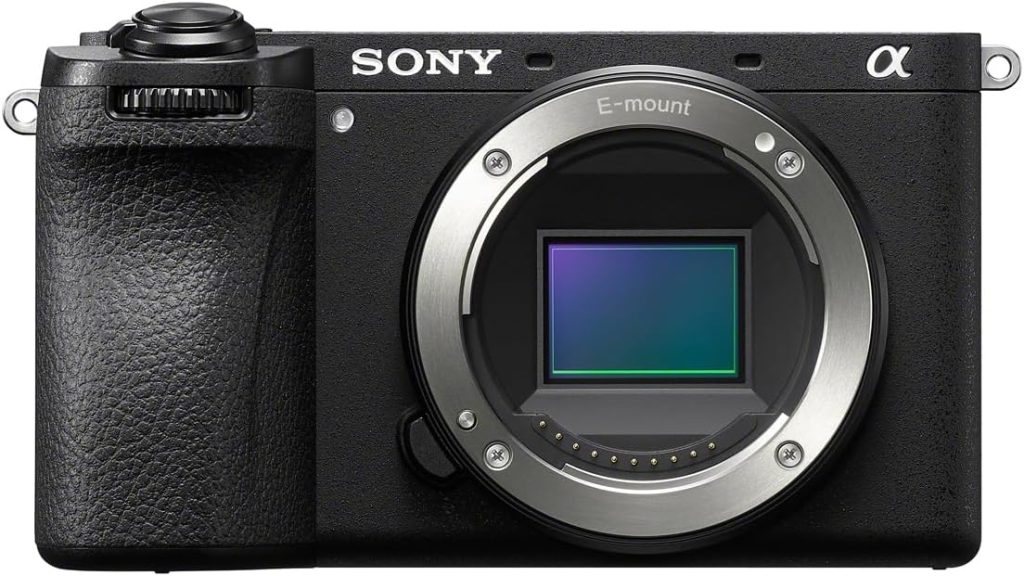
The Sony Alpha 6700 is an APS-C interchangeable lens camera that offers flexibility and performance for bird watchers.
Its 26 MP sensor ensures detailed and vibrant images, and the AI-based subject recognition system excels at locking onto fast-moving wildlife. The camera’s advanced autofocus system is one of the best in its class, capable of tracking birds even in cluttered environments.
The 4K video capabilities allow bird watchers to capture smooth and clear footage of birds, making it a versatile option for both photographers and videographers.
Additionally, the camera supports log shooting and LUT handling, which are useful for those who want to color grade their footage in post-production.
The camera’s small size and lightweight build make it portable and easy to carry, even for long bird-watching sessions.
Its interchangeable lens system provides flexibility, allowing users to choose the right lens for various shooting conditions.
However, the Alpha 6700 is a bit more expensive compared to similar mirrorless models, and the learning curve for beginners might be steep, especially for those unfamiliar with interchangeable lenses and manual settings.
Key Features
- 26 MP sensor for high-quality images
- AI-based subject recognition for fast-tracking
- 4K video recording with log shooting and LUT handling
- Interchangeable lens system for flexibility
- Compact and lightweight design
| Pros | Cons |
| ✅ AI-based subject recognition for accurate tracking | ❌ Higher price point compared to similar mirrorless cameras |
| ✅ 4K video recording for smooth footage | ❌ Steep learning curve for beginners, especially with manual settings |
| ✅ Interchangeable lens system for creative flexibility | ❌ Smaller body might feel cramped for users with larger hands |
| ✅ Compact design for portability | ❌ No in-body image stabilization, which can be a drawback for handheld shooting |
4. Panasonic LUMIX FZ1000 II
The Panasonic LUMIX FZ1000 II is an excellent choice for bird watchers who need both versatility and image quality in a single camera.
It features a 20.1 MP sensor and a 16x optical zoom lens (25-400mm LEICA DC lens), making it perfect for capturing birds at varying distances.
The camera’s 4K video recording and optical image stabilization (OIS) ensure that you can record clear and steady footage of birds in flight.
The 3.0-inch display is sharp and easy to use, even in bright outdoor settings.
One of the key benefits of this model is its fast autofocus system, which locks onto birds quickly, even in fast-moving scenes.
Its point-and-shoot design makes it a user-friendly option for those who prefer a simple setup.
However, the FZ1000 II lacks an interchangeable lens system, limiting long-term flexibility for serious bird photographers.
Additionally, while the image quality is great, the low-light performance is not as strong as other more expensive models.
Key Features
- 20.1 MP sensor with 16x optical zoom (25-400mm LEICA lens)
- 4K video recording for high-quality footage
- Optical image stabilization for steady shots
- Fast autofocus for capturing birds in motion
- User-friendly point-and-shoot design
| Pros | Cons |
| ✅ 16x optical zoom lens with excellent versatility | ❌ Fixed lens limits long-term flexibility |
| ✅ 4K video recording for dynamic bird footage | ❌ Low-light performance isn’t as good as higher-end models |
| ✅ Fast autofocus for capturing moving birds | ❌ No interchangeable lens system |
| ✅ Optical image stabilization to reduce shake | ❌ Larger than compact point-and-shoot models, may be bulky for some users |
5. OM SYSTEM OLYMPUS E-M10 Mark IV
The OM SYSTEM OLYMPUS E-M10 Mark IV is a great Micro Four Thirds mirrorless camera with a 20 MP sensor, offering excellent image quality in a lightweight body
Its 5-axis image stabilization ensures sharp handheld shots, especially useful when tracking birds over long periods.
The 4K video capabilities also allow bird watchers to capture stunning footage, while the Wi-Fi feature offers easy sharing and remote control.
The camera is small and portable, making it ideal for outdoor activities. The interchangeable lens system provides flexibility, allowing you to select lenses tailored to specific bird-watching environments.
However, the smaller sensor size compared to full-frame models limits its low-light performance. While the camera’s autofocus is decent, it may not be as fast as some competitors, especially when tracking fast-moving birds.
Key Features
- 20 MP sensor for high-quality images
- 5-axis image stabilization for steady shots
- 4K video recording for high-definition footage
- Compact design for portability
- Wi-Fi for easy sharing and remote control
| Pros | Cons |
| ✅ Compact and lightweight for easy portability | ❌ Smaller sensor limits low-light performance |
| ✅ 5-axis image stabilization for sharp handheld shots | ❌ Autofocus may struggle with very fast-moving birds |
| ✅ 4K video recording for stunning bird footage | ❌ Interchangeable lens system may require additional investment for serious bird photographers |
| ✅ Wi-Fi for easy sharing and remote control | ❌ Less advanced autofocus system compared to higher-end models |
6. Sony Alpha 9 III
The Sony Alpha 9 III is a powerhouse mirrorless camera designed for professional photographers and bird watchers who demand the best in performance.
With its full-frame 24.6 MP sensor and the world’s first global shutter system, it can shoot at an astonishing 120 fps blackout-free, ensuring that you never miss a moment, even when birds are in motion.
The camera also boasts continuous shooting and extremely fast autofocus, which is perfect for fast-moving subjects like birds in flight.
With its advanced AI-driven autofocus system, the Alpha 9 III excels at tracking birds in complex environments, ensuring a sharp focus on moving subjects.
Its robust build quality and weather sealing make it suitable for outdoor use in various conditions.
However, its high price point may be prohibitive for casual users. Additionally, the camera’s bulk and professional-grade controls may be overwhelming for beginners.
Key Features
- Full-frame 24.6 MP global shutter sensor
- 120 fps continuous shooting without blackout
- Advanced AI-based autofocus system for tracking moving subjects
- Weather-sealed body for durability in outdoor conditions
- Excellent for both photography and videography
| Pros | Cons |
| ✅ Blazing fast 120 fps shooting for capturing every moment | ❌ Extremely high price point, making it inaccessible for many hobbyists |
| ✅ Advanced AI autofocus for tracking moving birds | ❌ Bulky and heavy, may not be ideal for casual users or those with smaller hands |
| ✅ Full-frame sensor for exceptional image quality | ❌ Professional-grade features may be overkill for beginners |
| ✅ Weather-sealed body for durability in harsh environments | ❌ Expensive lenses may be required for optimal performance |
7. Canon EOS 90D
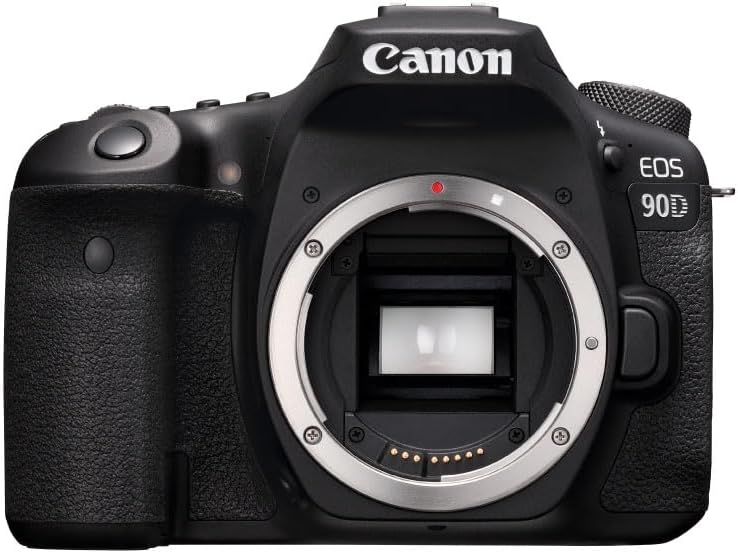
The Canon EOS 90D is a versatile DSLR camera featuring a 32.5 MP sensor and the ability to shoot 4K video without a crop, offering a fantastic solution for both bird photography and videography.
Canon EOS 90D’s Dual Pixel CMOS AF system ensures fast and accurate focusing, even in challenging lighting conditions, making it an excellent choice for bird watchers who want to capture sharp and vibrant images.
The 3.0-inch vari-angle LCD screen is perfect for capturing shots from tricky angles.
The EOS 90D’s built-in Wi-Fi and Bluetooth allow for easy sharing and remote control, adding convenience when working outdoors.
The camera’s autofocus is reliable, though it can be slower compared to some mirrorless options.
Additionally, as a DSLR, it’s larger and heavier than mirrorless cameras, which might make it less convenient for extended outdoor use.
Key Features
- 32.5 MP sensor for detailed, sharp images
- 4K video recording without crop
- Dual Pixel CMOS AF for fast and accurate focusing
- Vari-angle LCD screen for flexible shooting angles
- Wi-Fi and Bluetooth for easy sharing
| Pros | Cons |
| ✅ 32.5 MP sensor for sharp, high-resolution images | ❌ Larger and heavier than mirrorless cameras |
| ✅ 4K video recording with no crop for full-frame footage | ❌ Autofocus slower compared to more advanced mirrorless cameras |
| ✅ Dual Pixel CMOS AF for fast, accurate focusing | ❌ DSLR body may be less portable for some users |
| ✅ Wi-Fi and Bluetooth for easy remote control and sharing | ❌ Battery life can be shorter in 4K video recording mode |
8. Sony Alpha FX3 ILME-FX3
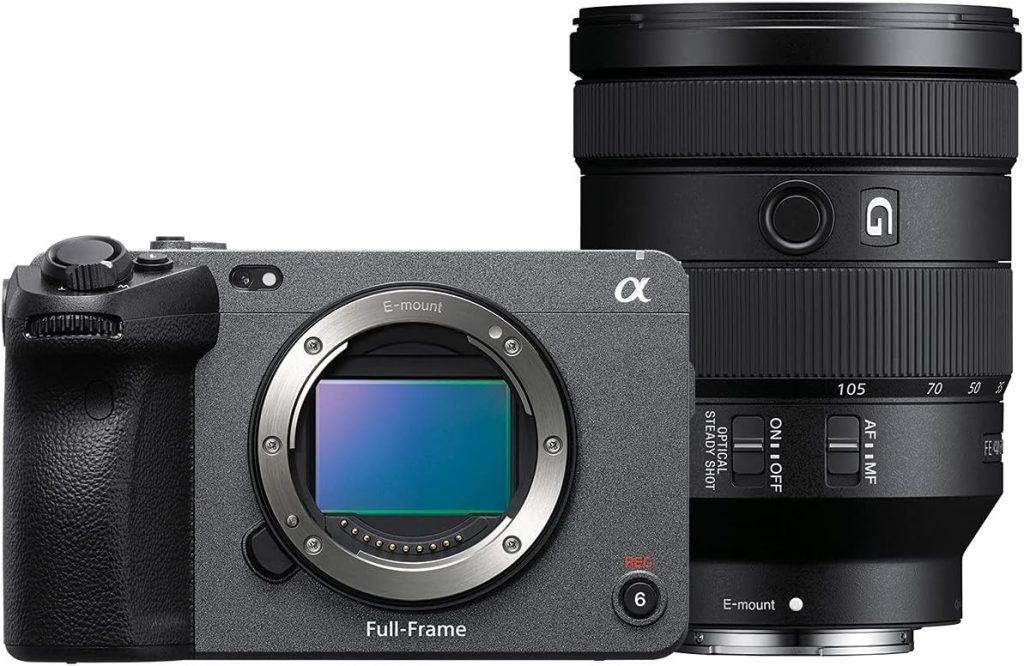
The Sony Alpha FX3 is part of Sony’s Cinema Line, designed for serious content creators and bird watchers who want top-tier video and image performance.
It features a full-frame sensor and offers 4K recording with incredible detail and color accuracy.
The FX3 is built with professional video production in mind, with advanced features like in-body stabilization and various LUT handling options, perfect for capturing cinematic bird footage.
The camera’s autofocus system is fast and reliable, ensuring smooth tracking of birds in flight.
Additionally, the FE 24-105mm F4 G OSS lens offers versatility for both wide-angle and zoom shots, making it an excellent all-around choice for wildlife photographers.
However, the FX3’s high price point and professional-grade features make it more suitable for experienced users and professional videographers than casual bird watchers.
Key Features
- Full-frame sensor for stunning image quality
- 4K video recording with high frame rates
- In-body stabilization for smooth handheld shooting
- Advanced video features including LUT handling
- Interchangeable lens system for flexibility
| Pros | Cons |
| ✅ Full-frame sensor for outstanding image and video quality | ❌ Extremely high price, more suited for professional users |
| ✅ 4K video with high frame rates for cinematic footage | ❌ Overkill for casual bird watchers who don’t need advanced video features |
| ✅ In-body stabilization for smooth handheld shooting | ❌ Bulky design not ideal for casual or compact setups |
| ✅ Versatile lens system with FE 24-105mm F4 G OSS lens | ❌ Requires significant investment in additional lenses and accessories |
Factors to Consider When Choosing the Best Camera for Birding
Choosing the best camera for birding is crucial for capturing those fleeting moments of birds in action, whether you’re photographing them perched on a branch or in flight.
Bird watching requires a camera that not only offers sharp image quality but also performs well in challenging environments.
Factors such as autofocus speed, zoom capabilities, portability, and image stabilization can make or break your bird-watching experience.
Here’s a detailed look at the important factors to consider when selecting the best camera for birding.
Sensor Size and Resolution
One of the most important factors to consider is the sensor size and resolution of the camera. Larger sensors, such as full-frame or APS-C, offer better image quality, especially in low light.
A high resolution (at least 20 MP) ensures sharp, detailed images, which is especially important when photographing distant birds or those in motion.
However, a higher resolution can result in larger file sizes, so you should also consider storage capacity.
For birding, a high-resolution sensor is useful because it allows you to crop images while maintaining clarity, especially when you are unable to get too close to the birds.
The combination of sensor size and resolution impacts the camera’s ability to capture fine details like feathers, which is essential for wildlife photography.
Autofocus Speed and Accuracy
Birds are often fast-moving, and capturing them in motion requires a camera with fast and accurate autofocus (AF).
Autofocus speed determines how quickly the camera can lock onto a subject, which is crucial when photographing birds in flight or perched from a distance.
Cameras with phase-detection or hybrid autofocus systems are typically better at tracking moving subjects.
Look for cameras with continuous autofocus (AF-C) and subject detection features that allow the camera to follow the bird as it moves.
Sony’s AI-based autofocus systems, for instance, can detect and track animals, ensuring that the bird stays in focus even when it’s darting through the frame.
Lens Compatibility and Zoom Range
A camera’s lens compatibility and zoom range are key when it comes to birding, as you often need to photograph birds from a distance.
A lens with a long focal length—at least 300mm—will give you the reach you need.
However, some cameras come with a wide zoom range, such as 25-400mm, which allows you to shoot both distant and close-up shots without switching lenses.
Interchangeable lens systems provide the greatest flexibility for bird watchers, enabling you to adapt to different environments and bird species.
Look for a camera that is compatible with a variety of lenses, from wide-angle lenses for landscape shots to telephoto lenses for capturing distant birds in fine detail.
Image Stabilization
Bird watching often requires shooting at long focal lengths, which can lead to blurry photos if the camera is not held steady.
Image stabilization (IS) helps reduce blurriness caused by camera shake, especially when shooting handheld.
Look for cameras with in-body image stabilization (IBIS), which compensates for slight movements in all directions, or optical stabilization in lenses, which reduces shake.
Some birding cameras also offer enhanced IS systems that can be particularly helpful when filming or shooting in low light.
The added stability ensures sharp photos even when tracking fast-moving birds.
Portability and Durability
Birding often involves being outdoors for long periods, and you need a camera that is both lightweight and durable.
Portability is essential, especially if you’re trekking through forests or walking for hours to find birds.
Smaller and lighter mirrorless cameras tend to be more portable than DSLRs, but you should balance weight with performance, as heavier cameras typically offer more features.
Additionally, the camera should be weather-sealed to withstand outdoor elements such as rain, dust, and humidity.
A durable body with weather protection ensures that your camera remains safe and functional, even in less-than-ideal conditions.
Look for cameras that are rugged enough to handle various environmental challenges.
Video Capabilities
If you’re also interested in capturing bird behavior or recording birds in flight, video capabilities are an important consideration.
Look for cameras with 4K video recording, as this provides high-quality footage that captures fine details, such as the movement of feathers.
Some cameras come with slow-motion features, which can be excellent for capturing fast movements like bird flapping their wings or taking off.
In addition to video quality, a camera with good autofocus during video shooting is essential, especially if you plan to record birds in action.
Cameras with continuous autofocus and subject tracking are ideal for dynamic scenes and moving wildlife.
Battery Life
Battery life is another critical factor when choosing a camera for birding.
Long outings in the field require a camera that can last through a full day of shooting without needing constant recharging.
Cameras with extended battery life are ideal for bird watchers who spend long hours in nature.
Some cameras also offer spare battery options, allowing you to keep a backup while you’re out in the field.
It’s also important to note that mirrorless cameras typically have shorter battery life compared to DSLRs.
However, many mirrorless models now offer extended battery options and energy-efficient features, so make sure to check the specifications before making a purchase.
Tips for Buying a Camera for Bird Photography
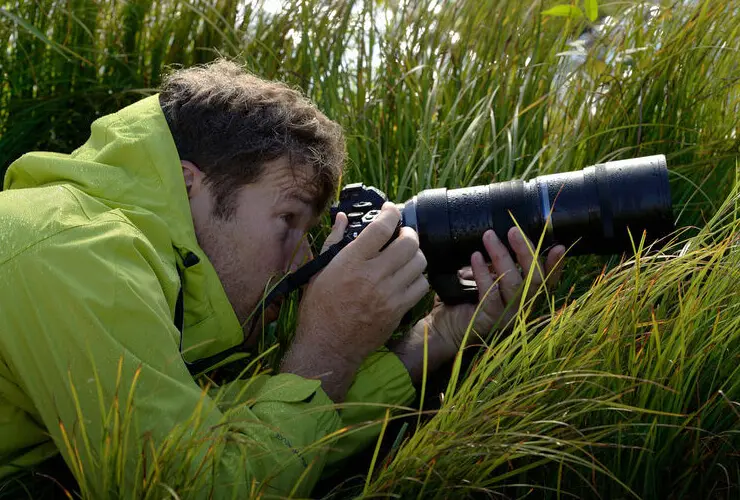
- Test the autofocus and image stabilization features before purchase.
- Invest in a high-quality lens suitable for bird photography.
- Consider your budget and prioritize features accordingly.
- Choose a camera that matches your skill level.
Frequently Asked Questions (FAQs)
Q: What is the best camera for capturing birds?
A: The Sony Alpha 9 III stands out for its speed and precision, making it one of the best choices for bird photography.
Q: Is a mirrorless camera better for bird photography?
A: Yes, mirrorless cameras offer advanced autofocus and lightweight designs, making them excellent for bird photography.
Q: What camera lens is best for birding?
A: A lens with at least 400mm focal length and image stabilization is ideal for birding.
Q: Is 600mm enough for bird photography?
A: Yes, a 600mm lens provides ample reach for capturing distant birds with clarity.
Parting Shot
Bird photography combines art, patience, and technology. With the right camera and lens, you can capture the beauty of God’s creation and share it with the world.
Choose the best camera for birding that matches your needs, and let your creativity take flight.


